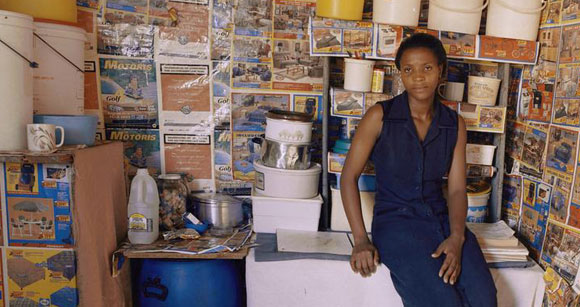
Image: Zwelethu Mthethwa, Untitled (from the series Interiors) (detail), courtesy of the MAD blog.
Disegno is a new design magazine that seeks to bring back long form critical writing and reflection to the design field; it appears in the form of a website, a biannual print magazine, and a series of events. I wrote my first essay for the Disegno website on how contemporary designers seek to emulate the figure and spirit of the bricoleur. As one of the magazine website’s Lessons, I traced back the origin of this term and its current implications, as seen in examples as the Museum of Arts and Design’s recent exhibition “Are You a Hybrid?” curated by North-American designer Stephen Burks, which I also critique. An excerpt is below:
Fascinated by the craftsmanship behind these creations,Are You A Hybrid? is trapped within the boundaries of formalism. Burks’ simplistic presentation of a powerful creative force is representative of the limited Western perception of the figure of the bricoleur. It also implies that this creative impulse can be appropriated and emulated by Western designers, reducing it to a formal trend. But what escapes Burks and much of the Western design world is the true essence of the bricoleur, which cannot be copied or crystallised. Because this creative impulse lives in a state of permanent flux, the stillness of the museum pedestal will only extinguish it. Because this maker only exists in the periphery of society, bringing him to the centre will thwart him.
The Western design world’s selfish fascination with the bricoleur seeks to tame and incorporate this elusive spirit within the discipline’s moulds. But it should instead observe and learn from a creative process that, unlike design, is unskilled and indifferent to conventions and standards. This tenacious, resistant spirit, intrinsic to emerging design scenarios, is already helping the discipline grow and reshape in developing nations. It is now up to the West to catch up.
The complete piece can be seen over at Disegno, as well as some reading suggestions if you’re interested in the topic.